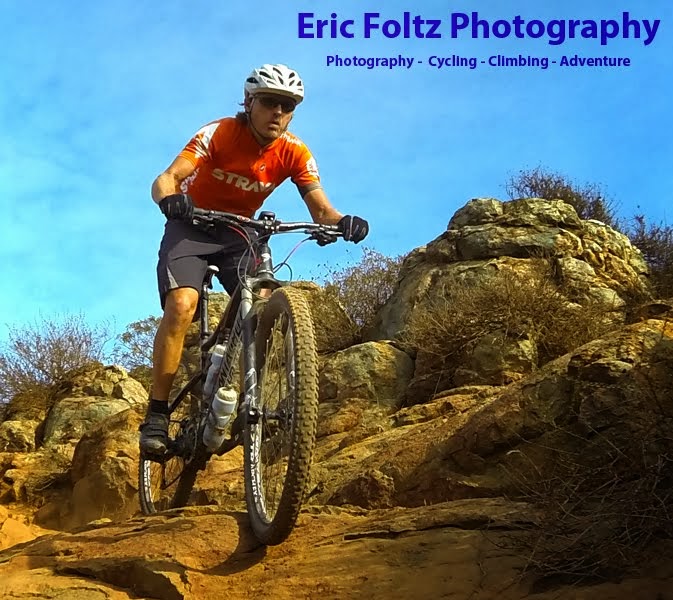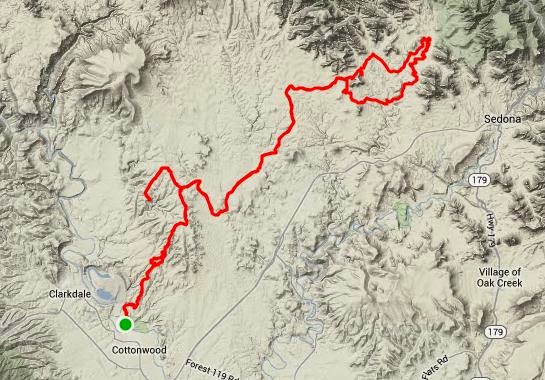Over the last three years I lost track of how many times I was asked what I planned to do when I finished my college degrees. It seemed that almost everyone was surprised when I answered that I would go back to working as a photographer.
 |
| Desert Garden is one of my most popular images. |
For me, there was never any doubt what I would do because I really do love it. Traveling around the country documenting the world I see is the perfect job for me.
My love of photography may surprise many who know me because I really hate talking about it. I am not a techie, I don't care what kind of camera, lenses, tripods, etc... that people use to produce images. I only care about the final product which for me is the print. How you got from the shoot to the print is almost completely irrelevant and uninteresting to me, all I care about is how that image looks in its end state.
So, on what is almost the 20-year anniversary of my first image sale, I thought I might open up a little about what I really hate talking about.
 |
| One of my first published credits - Rock & Ice Magazine |
A good place to start this discussion is to explain why I dislike talking shop. For me, that is easy. I do not believe that there is a right or wrong way to create something artistic. Like I said before, what matters is the final product and for me that is a photographic print.
I use Canon cameras and lenses, Epson printers and Moab papers. They work for me and I am comfortable with them. That is all that matters to me. I don't need the latest and greatest, I need a tool that will do what I need it to do. If you ask me for advice on what camera to buy, I probably won't have a clue. I don't really keep up on what is going on with the technology and only do research when I need to replace something. I use a 10-yearold camera with 15-year old lenses and as long as I don't see something that is exponentially better at the type of shooting I do, I don't see any reason to get something new just to have something new.
Too often when you talk to photographers, pros and amateurs alike, they have a workflow that they follow that they think is the best and they are insistent that their way is the right way to do things. I have no such illusions of grandeur. I have a workflow that works for me and it is quite simple.
 |
| Oxbow Bend - One of my favorite places. |
I travel light in the field. I carry my camera attached to a carbon fiber tripod that I throw over my shoulder. I have a small PJ bag that will have one spare lens, two split neutral density filters, a brush to clean the lens and a spare battery. That's it. I see a lot of photographers out there with backpacks stuffed with every piece of gear they own. While they are playing around looking important, I am moving from shot to shot. I don't care if I look professional. I care about how many set ups I can do while the light is good. And for me, the light is only good for an hour on each side of sunrise and sunset. If it is overcast, I may do some macro shooting if there is something interesting.
For landscapes, I shoot in RAW, do an initial edit and conversion using Canon Digital Professional, open the file in Photoshop at actual size, check for dust and sharpness, fit to screen, unsharp mask if needed, check levels, insert file info, save at highest setting, done. That's it. My entire workflow in one easy process. Anything that needs more than that is more trouble than its worth and gets deleted.
I miss the days of film when it was so easy to put your slides on a light table and just trash everything that wasn't up to standard. Now there is so much temptation to try and "fix" those so-so images in PS. I would rather just go out and reshoot.
I have been doing my own printing since Epson came out with the first archival quality inks. I started with a 2000P and then progressed up to a 4000 for larger prints. I use Moab Entrada Paper because it fits the look I want for my prints. Some people like Canon, some like HP, I like Epson. There is no right or wrong, only taste.
Selling prints is an interesting business. It is a part of being a photographer that I both love and hate equally.
I love when someone buys one of my prints for the simple reason that they have seen something that somehow touched them and they have decided that they want to make it a part of their life by hanging it in their home. I cannot think of a greater honor as an artist and I really get upset with artists who somehow feel insulted if people don't buy their work. Just because you create something doesn't mean everyone will like it as much as you do. I have thousands of images in my files. Some of my personal favorites never sell. Some that I don't really like do. People have different tastes.
 |
| Rickett's Glen Cascade - Another favorite. |
What I hate about selling prints is that sometimes it seems that people want you to sell them on why they should buy a print from you. I don't sell myself. I truly believe that that you should only buy art that you actually like. I would never hang anything on my wall just for that little name down in the corner.
All of my images are also available for stock licensing. I have an exclusive contract with Getty Images. I give them my images and they do all the marketing, licensing, collecting, etc... for me. They get their cut, I get mine. These are the images that are used for advertising, books, magazines, calendars, posters, etc... Most of my images are used in travel guides and magazines but I do find some interesting uses including the recent use of one of my bison images in Glamour Magazine. Over the years, my images have been used by National Geographic, Scientific American, Fodors, National Parks Conservation Association, U.S. Dept. of State and many others.
And this is what I love about my small niche in the photographic world. I am not the best photographer in the world but I shoot what I want and I am good enough to actually make some money doing something I enjoy. And that is something that I think everyone should try to do. Find something you like to do and figure out a way to make that your career.
 |
| Twilight at Jumbo Rocks - One of my newest images. |












